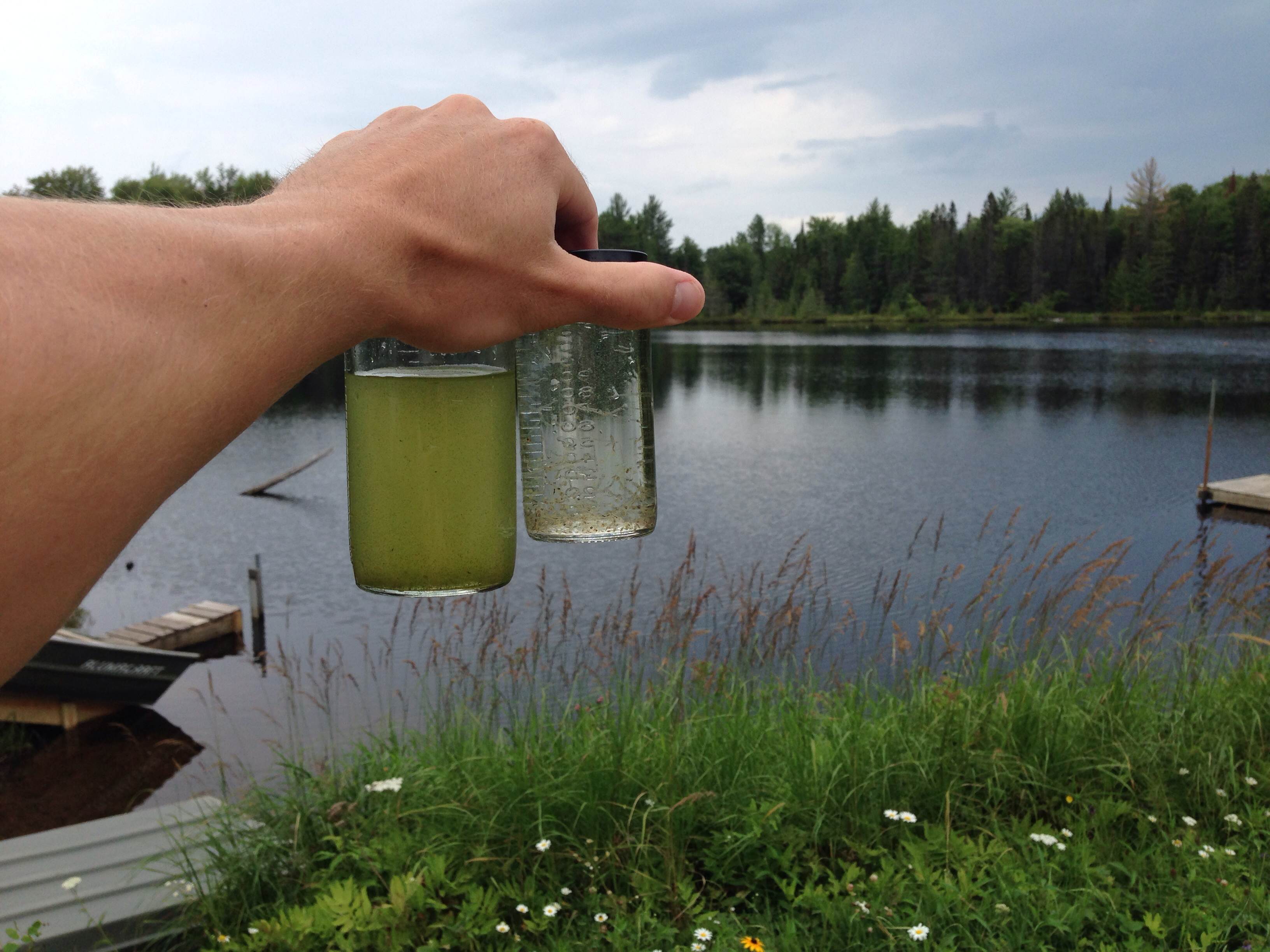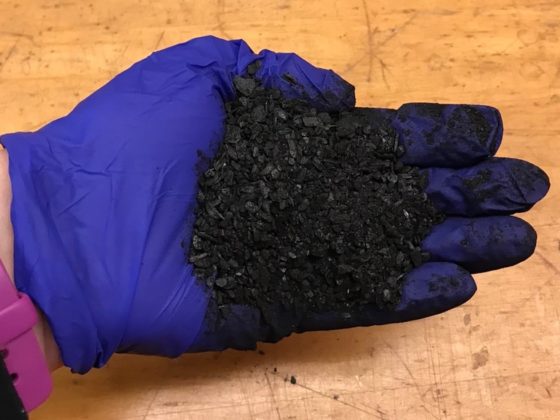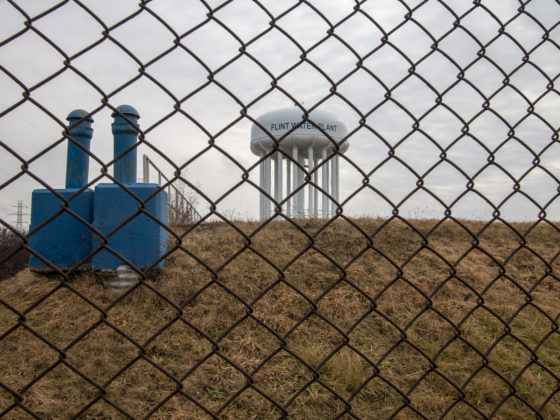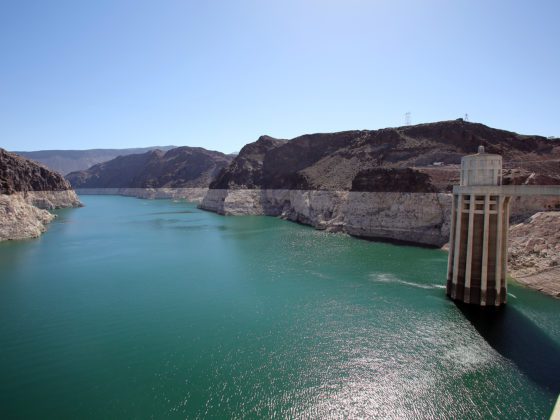Paul Bukaveckas, a professor from the Department of Biology and Center for Environmental Studies at VCU just visited UVA. He has studied aquatic ecology and water pollution for a long time, with a particular focus on algal blooms in recent years. Rapid increases or accumulations in the populations of algae in rivers and lakes (“blooms”) are a concern worldwide. When these algal proliferations die and sink, oxygen declines leading to low or zero oxygen concentrations. Blooms are often associated with runoff from agricultural lands (fertilizers) and/or storm water from cities that are rich in nutrients. In the United States, The Clean Water Act only loosely regulates this type of runoff, called non-point source pollution. Paul Bukaveckas’ research indicates that measuring the impact of algal blooms often depends on the particulars of the environment, and confirms that it often may take large nutrient reductions to effectively reduce such blooms. Paul Bukaveckas gave a talk about algal blooms in Virginia’s James River. The James River is part of the Chesapeake Bay watershed and often referred to as “America’s founding river” due to its critical role in the nation’s early history. Mike Pace briefly spoke with him.
Question: How big a problem are algal blooms for the James River? And why should we care about them?
The James River experiences intermittent algal blooms in the lower, saline part of the estuary (near the confluence with Chesapeake Bay) and chronic, summer-long algal blooms in the upper, freshwater part of the estuary. These blooms have a number of detrimental impacts on water quality including reduced water clarity, low dissolved oxygen (at night) and the production of algal toxins. These in turn have negative effects on aquatic life and raise potential human health concerns. Over the past 7 years I have been monitoring toxins produced by cyanobacteria in the freshwater portion of the estuary. These toxins are commonly found in water, fish and shellfish, particularly in late summer. We have even documented the presence of these toxins in shore birds feeding on emerging aquatic insects. Algal toxin levels in the James are low and therefore not likely to be of concern for people who may be exposed via drinking water, recreational contact, or consumption of fish and shellfish. However, we have shown that the toxins suppress the filtering rates of clams, which may further contribute to problems of poor water clarity and low abundance of aquatic vegetation.
Question: Are there particular features that make the James River a good place to study algal blooms?
A challenge to studying algal blooms is that these tend to be unpredictable, ephemeral events; similar to the problem of capturing storm conditions in streams. In the James however, we know where and when algal blooms will occur. In the freshwater part of the estuary, they reliably start in May and extend through September, and they occur in the same location year after year. This is the part of the James near Hopewell, VA where the estuary becomes wider. It is a natural feature of the channel which favors the occurrence of algal blooms because the shallower depth creates better underwater light conditions for algae to grow, and the longer water residence time gives them more time to grow. These blooms are enhanced by the delivery of nutrients from the upper watershed and local point sources from the Richmond metropolitan area. The predictability of these blooms makes them easier to study, and also because VCU’s field station, the Rice Rivers Center, is located on the James in the area where algal blooms are most common. We have equipment installed on the Rice pier to continuously monitor water quality, and a mesocosm facility which allows us to draw water from the estuary and conduct experiments in large outdoor tanks.
Question: What can be done about algal blooms?
In small lakes there are short-term chemical solutions for reducing algal blooms. But in large bodies of water, and particularly flowing systems, like the James, these chemical treatments are not an option. Therefore the only management option is to reduce nutrient inputs at their source. In the Bay region overall, and along the James in particular, investments in wastewater treatment plant upgrades have substantially reduced nutrient inputs from these point sources. Current point source inputs to the upper James are less than one third of levels occurring in the 1980’s. Despite this we have not observed a decline in the frequency or magnitude of algal blooms. It is important to recognize that non-point source inputs from agriculture and storm water are large, and highly variable from year-to-year depending on rainfall. Also, there is a large internal nutrient cycling component that has built up over many decades of nutrient loading. At present, we lack an understanding that would allow us to predict how the internal cycles will respond to external nutrient reductions, and therefore we are unable to forecast the speed of recovery.
Question: You do a lot of work on setting water pollution standards. How effective are these standards in fighting algal blooms?
Water quality standards are the basis for managing pollutants. We set goals to delineate safe levels that protect aquatic life and human health. This is somewhat more straightforward for pollutants that have direct toxic effects (e.g., some metals) as the concentrations at which toxicity occurs can be determined, and used to set water quality goals. For nutrients this is a challenge because these do not have toxic effects at the concentrations typically found in the environment, but rather they have stimulatory effects on algae, and this leads to secondary deleterious effects (low oxygen, clarity, toxins, etc.). Problems with excess pollutants are often managed with regulatory standards based on dissolved oxygen; this includes for example, Chesapeake Bay, which, in the mainstem, has a large region of oxygen-depleted water. However in systems like the James, chronic oxygen depletion does not occur because of active mixing of surface and bottom waters. And yet the James has problems arising from the occurrence of algal blooms and this requires alternative water quality standards. My recent work has focused on the utility of chlorophyll-based standards, which are a direct measure of algal abundance. Their implementation requires that we quantitatively relate chlorophyll concentrations to deleterious impacts (water clarity, toxins, etc.) in order to obtain scientifically defensible standards. There are also issues pertaining to how these standards are applied (e.g., as a mean value, or a not-to-exceed value, what time of year, etc.). But most vexing is the problem that once you have set a standard you need to determine what level of nutrient reduction is needed to attain that standard. In most systems, including the James, we do not have historical data to tell us what level of nutrient reduction is needed to attain chlorophyll levels lower than those observed today. We rely on models to forecast future conditions, but this is problematic given our lack of knowledge about internal nutrient cycles and their response to external load reductions. Work around the globe has shown that where large reductions in nutrient loads are achieved (e.g., 80-90%), there are consistent and rapid improvements in water quality. Small reductions (<50%) have yielded highly variable results, in some cases with little no reduction in algal blooms. This is what we are currently seeing in the James.






